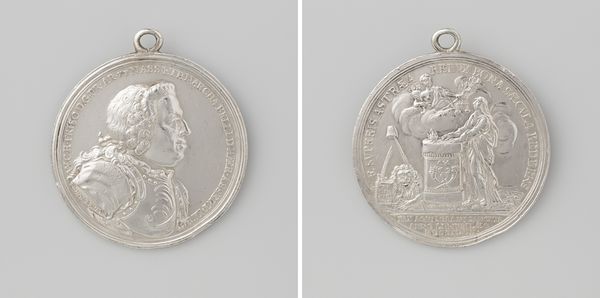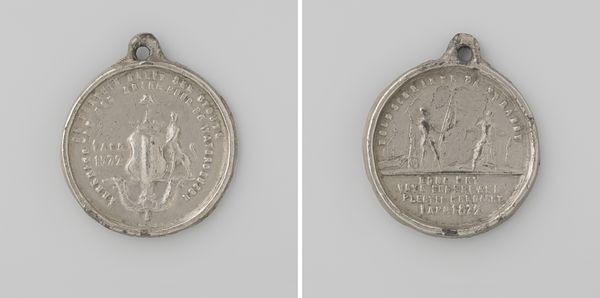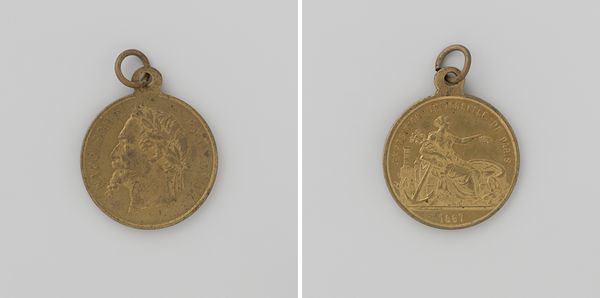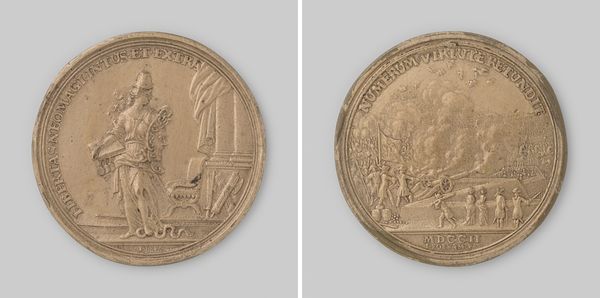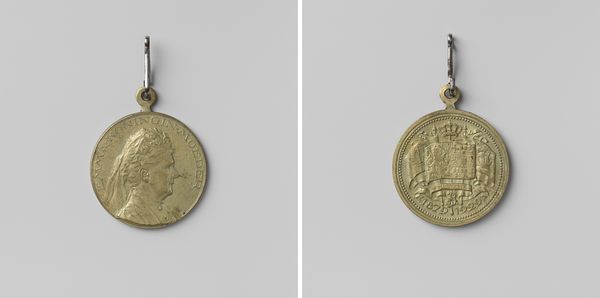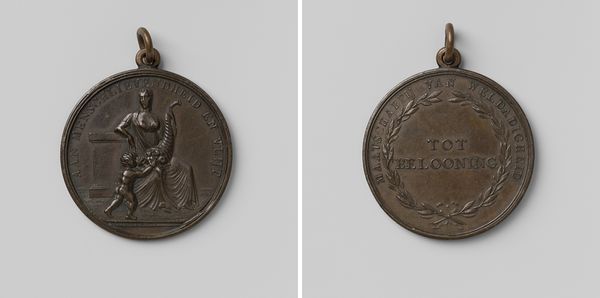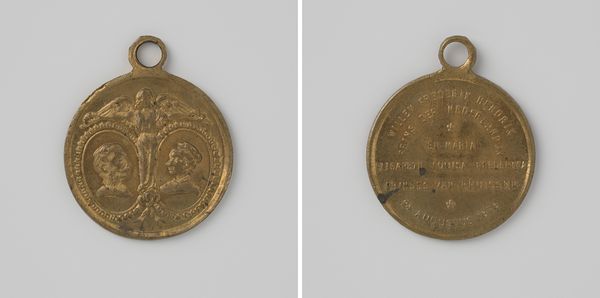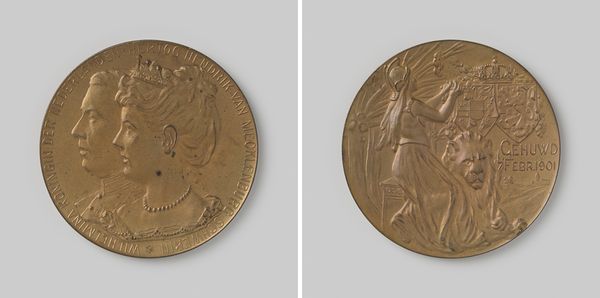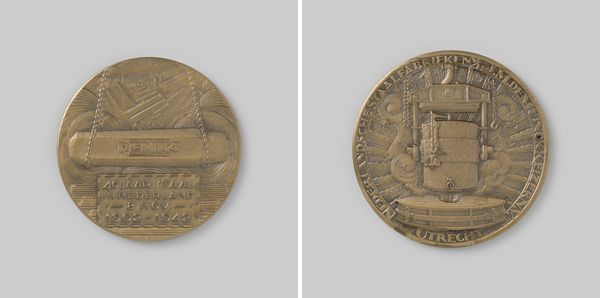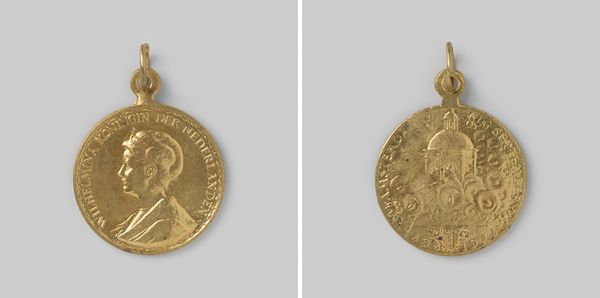
print, metal, relief
#
neoclacissism
# print
#
metal
#
relief
#
old engraving style
#
history-painting
Dimensions: diameter 4 cm, diameter 3.4 cm, weight 10.89 gr
Copyright: Rijks Museum: Open Domain
Editor: This is the "Peace of Lunéville" medal, made in 1801, by Christian Josef Krüger. It's quite small, but the detail is amazing, especially the allegorical figures. What historical context do you think influenced this piece? Curator: The "Peace of Lunéville" treaty, signed between France and Austria, ended the Second Coalition against Revolutionary France. This medal served as propaganda, a visual affirmation of French dominance and the triumph of republican ideals. How do you think Krüger navigated the politics of imagery within this context? Editor: Well, I see elements of Neoclassicism, maybe a way to associate the peace with reason and order in a tumultuous time. Curator: Exactly. The choice of Neoclassicism, with its references to ancient Rome, links Napoleon’s ambitions to those of past emperors, presenting him as a restorer of order, despite the ongoing power struggles. Did these types of commemorative medals circulate widely? Editor: That's interesting, and, I suppose, yes? Like official government communications… only portable? Curator: Precisely. They were distributed among officials and those deemed important enough to possess one. This becomes a mechanism to cultivate loyalty. Medals, then, served to commemorate the event, promote specific political interpretations, and solidify power. Editor: So, this medal isn’t just about peace, but about power. Curator: Indeed. It showcases how even seemingly celebratory art serves deeper social and political purposes. What does that make you consider about the images we consume today? Editor: It makes me think about questioning everything! Thank you, this was super insightful!
Comments
No comments
Be the first to comment and join the conversation on the ultimate creative platform.
